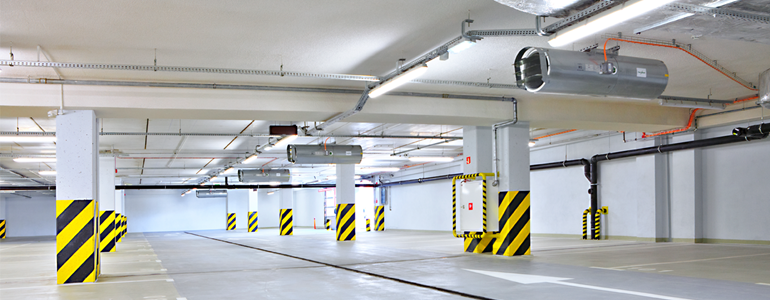Car Park Ventilation Solutions
In an underground or enclosed carpark there is a risk that carbon monoxide from vehicle exhausts can build up to an unhealthy level. An effective and responsive ventilation system can not only prevent this, it can also provide valuable smoke extraction in the event of a fire.
Most carparks are open air or multi-storey, with open sides which allows them to self-ventilate, from the wind and from the air drawn in and out by cars as they enter or leave. Depending on the size and layout however, there can be areas that don’t get as much fresh air as they should; underground car parks certainly don’t. To prevent the build-up of harmful fumes, it is essential that an extraction system is put in place.
Traditional garage ventilation systems are either based on duct runs with high- and low-level extraction or on more simplistic designs with extract fans and supply from fresh air ramps. Our goal is to remove the need for any ducting by using Jet Fans to distribute the air.
Operating on Demand
Unlike traditional system design approaches, with a Woods Air Movement solution, single or multiple points of extract are placed strategically, with Jet Fans that will operate independently or in groups as required. They only switch on when fumes build up, making them economical to run.
During day-to-day operation, the level of Carbon Monoxide is constantly measured by gas monitoring sensors throughout the car park level. Upon detection of increased levels of contaminants, selected Jet Fans are activated to dilute the contaminated air and guide it towards the point of extract.










